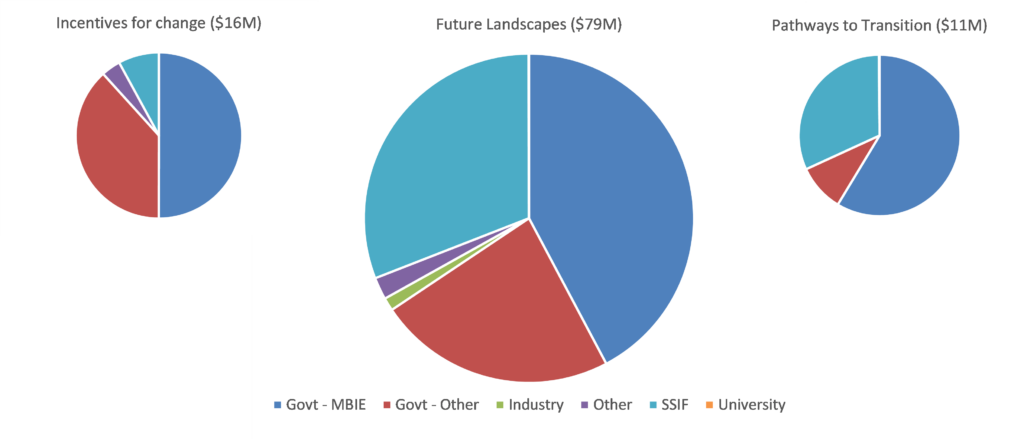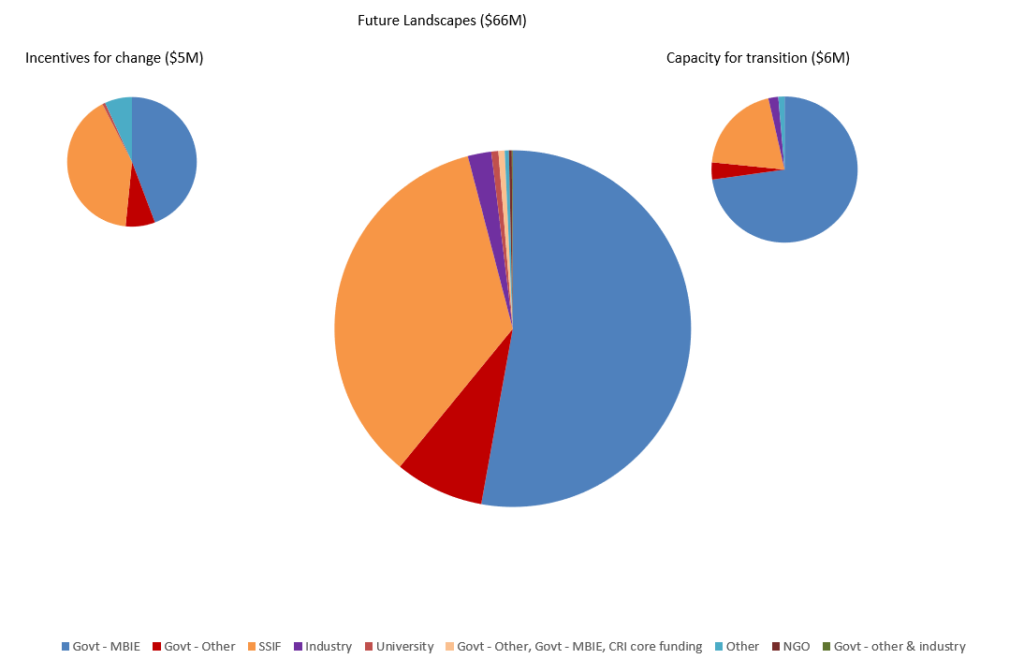What Does The Overall Portfolio of Land and Water Research in Aotearoa Look Like in 2022?
Currently 178 research programmes are underway in Aotearoa that align to the kaupapa of the Our Land and Water Challenge (Toitū te Whenua, Toiora te Wai). While not directly funded by Our Land and Water, this aligned research all contributes to delivering our mission and objectives.
For the fourth time since the start of the Our Land and Water National Science Challenge in 2016, we have collated and ‘mapped' New Zealand research that has similar goals to our own: healthy water quality, resilient land uses, and a prosperous primary sector.
The Research Landscape Mapp 2022 aims to include all ‘live’ research programmes (as at June 2021) that are larger than $50,000 in size, and that have outcome goals complementary to the official government-set objective for our National Science Challenge:
To enhance the production and productivity of New Zealand’s primary sector, while maintaining and improving the quality of the country’s land and water for future generations.
This year, we identified 178 research programmes in Aotearoa that are aligned with this objective.
How did we get this number? The Our Land and Water science theme leaders and chief scientist approached research providers, funders, and stakeholders to request information about their current and recent research in the land and water space, during March and April this year. The questions and methods of analysis were the same as those used in the previous versions of the Research Landscape Map to enable direct comparisons to be made over time.
In the past, the Research Landscape Map was used to help identify research gaps and prioritise funding. However, as the National Science Challenges are coming to an end in 2024, this year’s map was more about demonstrating the trends around investment, and alignment to the Our Land and Water Challenge in comparison to the previous maps that were done in 2015, 2017 and 2019.
What we found this year
- Total investment in aligned research projects was $106 million – a 37% increase since the last research map in 2019. Of this, $102 million was from government funding through MBIE, Strategic Science Investment Funding, Ministry for Primary Industries and other government funding sources.
- There is increased research investment in climate and climate change effects. Investment in water quality limits and mitigations has decreased as more work is directed towards farm systems, perhaps in recognition that mitigations alone will be unlikely to meet water quality targets and land use change may be necessary.
- The greatest funding source for projects likely to make a high contribution to the Our Land and Water mission was the Strategic Science Investment Fund (SSIF) which is administered through the Crown Research Institutes (see figure 1, below). This indicates a continued strategic shift in CRI investment towards the Our Land and Water mission.
- MBIE funding (eg. Endeavour and Smart Ideas) accounted for the largest proportion of programmes that had moderate or low alignment with the Our Land and Water mission.
- Most of the ‘Government-other’ funded research came from Ministry for Primary Industries funding sources. These projects were largely associated with climate change research, in particular carbon or nitrous oxide emissions from land to air. The study of greenhouse gasses is outside the scope of the Our Land and Water Challenge, although adapting to climate change is within scope.
- Compared to the 2019 edition of the Research Landscape Map, the number of programmes and level of investment assessed as likely to make a moderate to very high contribution towards the Our Land and Water objective increased for research aligned to our Future Landscapes and Incentives for Change research themes, but was lower for our Pathways to Transition theme (noting fewer projects were aligned to this theme).
Investment in water quality limits and mitigations has decreased as more work is directed towards farm systems, perhaps in recognition that mitigations alone will be unlikely to meet water quality targets and land use change may be necessary
Total aligned research investment, 2022
Use the right arrow to compare to 2019 (Figure 2)
___
More information:
- Research Landscape Map 2022
- Excel data is available on request
Author
 View Our Strategy Document 2019 – 2024
View Our Strategy Document 2019 – 2024






Leave a Reply